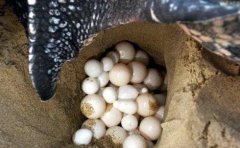Breeding techniques of forest musk deer: how to raise young musk deer and what nutrients are needed
The requirement of raising young musk deer is to ensure that the young musk deer live free from disease and cultivate them with excellent production performance. So how do you raise it? Let's take a look.

In the process of growth and development, the body weight and body size of young musk deer are increasing, and their metabolism is very exuberant. With the proliferation of a large number of tissues and cells, each tube system is growing at different rates. This complex regularity depends on various environmental conditions, especially closely related to good feeding and management conditions. Good nutritional regulation can accelerate the growth of young musk deer, gain weight, accelerate sexual maturity and have higher production capacity.
Nutritional requirements of young musk deer
In the young stage of musk deer, due to the rapid growth rate, its protein metabolism is also stronger, and more proteins are deposited in the body. With the increase of age, the protein metabolism decreases, and the protein deposited in the body decreases gradually. The heat energy needed for the growth of young musk deer is mainly used for basic metabolism, growth, all kinds of exercise, digestion and absorption. Under normal feeding conditions, with the growth of musk deer, most of the body fat accumulated in subcutaneous tissue, muscle connective tissue and abdominal cavity.
The normal growth of bones is related to the supply of calcium, phosphorus and vitamin D. The reasonable ratio of calcium to phosphorus in young musk deer was about 1.5-2:1 in the early growth stage and 1-1.2 in the later growth stage. Insufficient supply of calcium and phosphorus can make bones crisp and not solid, and in severe cases can develop into rickets or rickets. The metabolism of calcium and phosphorus in young musk also had certain rules in different growth stages. more calcium and phosphorus were deposited in metabolism in the early stage of growth and less in metabolism in the later stage of growth. Light plays an important role in the growth of bones, and young musk deer who often bask in the sun rarely have rickets. The diet of young musk deer needs not only adequate supply of calcium and phosphorus, but also a proper proportion of calcium and phosphorus in order to ensure the normal growth of bones.
- Prev

How long does it take for turtles to hatch? Introduction to how to ovalize turtle eggs
As we all know, turtles have strong vitality, few epidemic diseases, and are easy to raise and manage, but this is for adult turtles. In the whole process of tortoise or baby turtle, it is not possible to be careless in some links and details. The hatching of turtle eggs is a more technical link, if not.
- Next

Zhejiang East White Goose: is it easy to raise East Zhejiang White Goose? How to select geese for eastern Zhejiang white geese
Is it easy to raise white geese in eastern Zhejiang? It's easy to raise. Eastern Zhejiang White Goose is an excellent goose breed, which has the characteristics of delicious meat and fast growth in the early stage. Then how to select the breed of eastern Zhejiang white goose? Do you know? Let's take a look. Breeder geese can transfer themselves through genetic material
Related
- On the eggshell is a badge full of pride. British Poultry Egg Market and Consumer observation
- British study: 72% of Britons are willing to buy native eggs raised by insects
- Guidelines for friendly egg production revised the increase of space in chicken sheds can not be forced to change feathers and lay eggs.
- Risk of delay in customs clearance Australia suspends lobster exports to China
- Pig semen-the Vector of virus Transmission (4)
- Pig semen-the Vector of virus Transmission (3)
- Five common causes of difficult control of classical swine fever in clinic and their countermeasures
- Foot-and-mouth disease is the most effective way to prevent it!
- PED is the number one killer of piglets and has to be guarded against in autumn and winter.
- What is "yellow fat pig"? Have you ever heard the pig collector talk about "yellow fat pig"?

